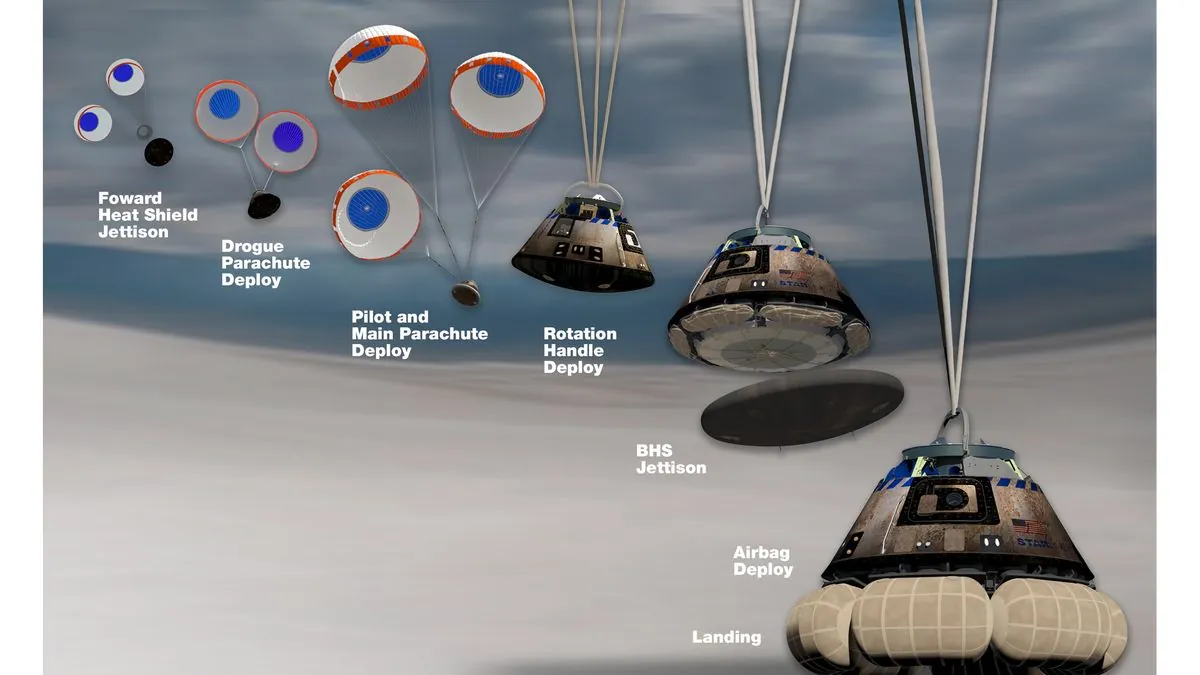Boeing Starliner's Uncrewed Return Marks Setback in NASA Partnership
Boeing Starliner capsule set for uncrewed return from ISS due to safety concerns. NASA opts for SpaceX to bring astronauts home, raising questions about Starliner's future operational status.

The Boeing Starliner space capsule is set to make an uncrewed return from the International Space Station (ISS) on September 6, 2024, marking a significant setback in NASA's commercial crew program. This decision comes after NASA officials lost confidence in the spacecraft's ability to safely transport astronauts Sunita Williams and Barry "Butch" Wilmore back to Earth.
The Starliner is scheduled to undock from the ISS at 6:04 p.m. on Friday, contingent on weather conditions. Using thruster burns, the capsule will be guided towards Earth, with an expected landing at White Sands Space Harbor in New Mexico around 12:03 a.m. on Saturday, September 7.

Steve Stich, NASA's commercial crew program manager, expressed mixed emotions about the mission's outcome, stating, "It's been a journey to get here, and we're excited to have Starliner undock and return." However, the spacecraft's return without crew represents a significant setback for Boeing, which had hoped this test flight would lead to regular operational missions.
The decision to bring Williams and Wilmore home via a SpaceX Dragon capsule instead of the Starliner was made due to thruster problems and helium leaks experienced during the initial journey to the ISS in early June. NASA deemed the complete round trip with crew too risky, necessitating further ground tests before the Starliner can be fully certified for crewed flights.
Dana Weigel, NASA's ISS program manager, acknowledged the challenges faced during the mission, describing it as "a really busy and challenging summer." The situation has strained relations between Boeing and NASA, raising questions about the future of the Starliner program.
The SpaceX Dragon mission tasked with bringing Williams and Wilmore home is now scheduled for launch on September 28, 2024. The astronauts will remain at the ISS until February 2025, when they will return to Earth aboard the Dragon capsule. This change in plans has resulted in a reduction of the original Crew-9 mission from four astronauts to two, to accommodate Williams and Wilmore.
"They're ready to execute whatever mission we put in front of them."
Despite the setbacks, Weigel reported that both astronauts remain positive and are prepared to adapt to the new mission parameters.
This situation highlights the complexities and challenges of NASA's Commercial Crew Program, which aims to stimulate private-sector development of spacecraft. While the program has seen success with SpaceX's Dragon capsule, the Starliner's difficulties underscore the ongoing efforts to establish reliable and safe transportation systems for astronauts to and from the ISS.
As the space industry continues to evolve, the outcome of this mission serves as a reminder of the high stakes and rigorous safety standards required in human spaceflight. The coming months will be crucial for Boeing as they work to address the issues identified during this mission and strive to regain NASA's confidence in the Starliner's capabilities.


































